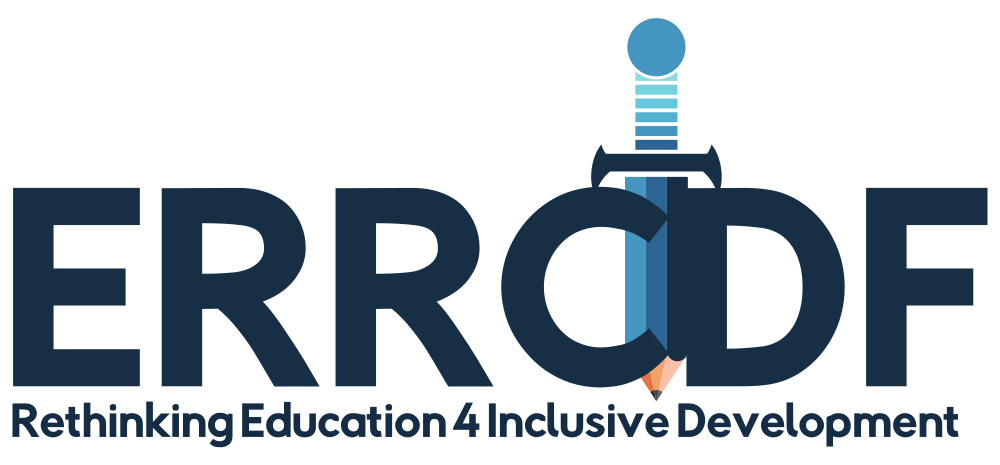Exploring causes of bullying among grade eight and nine learners in a South African education district
DOI:
https://doi.org/10.38140/ijer-2024.vol6.25Keywords:
Bullying, causes of bullying, deviant behaviour, bullying victims, social control theoryAbstract
Bullying is a social phenomenon that has become a complex problem worldwide due to the complications that arise from its persistence among school-going adolescents. This study explored the causes of bullying among grades 8 and 9 in one secondary school in Amatole East District, Eastern Cape Province, South Africa. This qualitative study employed constructivist paradigm and a case study design. It utilised interviews to elicit data from 15 purposefully sampled participants. This study was informed by Travis Hirschi's 1968 Social Control Theory, and I used Braun and Clark's thematic analysis steps to analyse and interpret the data. The study found that bullying is triggered by jealousy and envy among learners, inadequate school furniture, family environment, physical attributes, lack of moral education, lack of sexual orientation education, and age differences among learners. Therefore, the study concluded that in order to detect the causes of bullying among grade 8 and 9 learners, teachers must apply Social Control Theory in the school environment by establishing consistent and supportive teacher-learner relationships to easily identify learners' behavioural changes and promote support, peer relationships, and unity among learners. This will reduce internal motivation that leads them to initiate bullying and violate other learners' rights. Additionally, the findings of this study will enable school stakeholders to develop intervention strategies, including disciplinary measures for learners, providing sexual orientation education, and involving parents in their efforts to manage bullying among grades 8 and 9 learners.
References
Baiden, P., Kuuire, V. Z., Shrestha, N., Tonui, B. C., Dako-Gyeke, M., & Peters, K. K. (2018). Bullying victimisation as a predictor of suicidal ideation and suicide attempt among senior high school students in Ghana: Results from the 2012 Ghana Global School-Based Health Survey. Journal of School Violence, 18(2), 300-317. https://doi.org/10.1080/15388220.2018.1486200
Barbeau, N. (2010). Age limit for schools? https://www.iol.co.za/news/south-africa/age-limit-for-schools-474488
Baxter, P., & Jack, S. (2008). Qualitative case study methodology: study design and implementation for novice researchers. The qualitative report, 13(4), 544–559. https://doi.org/10.46743/2160-3715/2008.1573
Bhandari, P. (2020). What is qualitative research? Methods and examples. https://www.scrbbr.com/methodology/qualitative-research/
Braun, V., & Clarke, V. (2006). Using thematic analysis in psychology. Qualitative research in psychology, 3(2), 77–101. https://doi.org/10.1191/1478088706qp063oa
Braun, V., & Clarke, V. (2012). Thematic analysis. In H. Cooper, P. M. Camic, D. L. Long, A. T. Panter, D. Rindskopf, & K. J. Sher (Eds.), Research designs: Quantitative, qualitative, neuropsychological, and biological (pp. 57–71). American Psychological Association. https://doi.org/10.1037/13620-004
Campuslabs. (2020). Avoiding bias in qualitative data analysis.https://baselinesupport.campuslabs.com/hc/en-us/articles/204305695-Avoiding-bias-in-qualitative-data-analysis#!
Chandra, R., & Azimmudin, S. (2013). Influence of intelligence and gender on academic achievement of secondary school students of Lucknow City. IOSR Journal of Humanities and Social Science, 17(5), 9–14.
Connelly, L. M. (2016). Trustworthiness in qualitative research. Medsurg Nursing, 25(6), 435–436.
Creswell, J. W. (2013). Table of Contents PART I-Preliminary Considerations. Sage Publications.
Crowe, S., Cresswell, K., Robertson, A., Huby, G., Avery, A., & Sheikh, A. (2011). The case study approach. BMC Medical Research Methodology, 11(1), 1–9. https://doi.org/10.1186/1471-2288-11-100
De Wet, C. (2005). The nature and extent of bullying in Free State secondary schools. South African Journal of Education, 25(2), 82-88. https://hdl.handle.net/10520/EJC32034
Dehalwar, K., & Sharma, S. N. (2024). Exploring the distinctions between quantitative and qualitative research methods. Think India Journal, 27(1), 7-15. https://doi.org/10.5281/zenodo.10553000
Germany education. (n.d.) Bullying and how to handle it- Germany. https://www.germanyeducation.info/career-options/career -guide/bullying.html
Gordon, S. (2020). Three reasons why envy and jealousy lead to bullying. https://www.verywelljamily.com/why-envy-causes-bullying-460521
https://doi.org/10.1016/B978-0-08-097086-8.45088-9
Indeed Editorial Team (2022). What is an in-depth interview (and how to conduct one). https://indeed.com/career-advice/interviewing/in-depth-interview
Izadi, M., & Hart, R. (2024). The influence of the physical environment on social behaviour, school climate, and bullying in schools. Children's Geographies, 22(1), 66-81. https://doi.org/10.1080/14733285.2023.2232751
Jang, S.J., & Agnew, R. (2015). Strain theories and crime. In J.D. Wright (Ed.), International Encyclopedia of the Social & Behavioral Sciences (2nd ed., pp. 495-500). Oxford.
Khairy, H., El-Gibaly, O., & Abdelrheem, S. S. (2021). Bullying and Victimisation among Adolescents in Governmental Schools in Aswan City, Upper Egypt. Egyptian Journal of Community Medicine, 39(4), 67-80.
Kiger, M. E., & Varpio, L. (2020). Thematic analysis of qualitative data: AMEE Guide No. 131. Medical teacher, 42(8), 846-854. https://doi.org/10.1080/0142159X.2020.1755030
Li, J., & Hesketh, T. (2021). Experiences and perspectives of traditional bullying and cyberbullying among adolescents in Mainland China-implications for policy. Frontiers in Psychology, 12, 672223. https://doi.org/10.3389/fpsyg.2021.672223
Loop, E. (2018). Causes of school bullying. https://classsroom.synonym.com/causes-school-bullying-5005944.html
Madonsela, T. P., Omodan, B. I., & Tsotetsi, C. T. (2022). Causes of The Alarming Rise of False Sexual Allegations Against Teachers in South African Schools. JETL (Journal of Education, Teaching and Learning), 7(2), 1-5. https://dx.doi.org/10.26737/jetl.v7i2.3238
Masilo, D. T. (2018). Social work intervention to address the phenomenon of bullying amongst learners in the school setting: A literature review. South African Journal of Education, 38(1), s1-s9. https://doi.org/10.15700/saje.v38ns1a1594
McCombes, S. (2019). What is a case study? Definitions, examples and methods. https://www.scrbbe.com/metodology/case-study
Mguye, N., & Omodan, B. (2023). Managing bullying among senior phase learners in Eastern Cape Province, South Africa. Journal of Social Studies Education Research, 14(3), 52-73.
Mohd, S. (2021). Lack of moral values can give rise to bullying–expert. https://www.bernama.com/en_focus/news.php/id=2036124
Mtshazi, S. (2021). Investigating the nature and prevalence of mobile bullying in the rural Eastern Cape province of South Africa [Master's thesis, University of Cape Town].
Noboru, T., Amalia, E., Hernandez, P. M. R., Nurbaiti, L., Affarah, W. S., Nonaka, D., & Kobayashi, J. (2021). School?based education to prevent bullying in high schools in Indonesia. Pediatrics International, 63(4), 459-468. https://doi.org/10.1111.ped.14475
Okeke, C., Akobi, T., & Maseli, M. (2024). The Perceived Impact Of Bullying On Academic Performance Of High School Learners. Webology, 21(1), 51-63. https://orcid.org/0000-0003-2726-2118
Omodan, B. I., & Ige, O. A. (2021). Re-constructing the tutors-tutees relationships for better academic performance in universities amidst the COVID-19 new normal. Mediterranean Journal of Social Sciences, 12(2), 30-30. https://doi.org/10.36941/mjss-2021-0010
Omodan, B.I. (2024). Research paradigms and their methodological alignment in social sciences: A practical guide for researchers (1st ed.). Routledge. https://doi.org/10.4324/9781003484066
Ricky, S.T. (2001). Victims of Bullying. Cambridge University Press.
Robinson, R.S. (2014). Purposive sampling. In A. C. Michalos (Ed.), Encyclopedia of quality of life and well-being research. Springer.https://doi.org/10.1007/978-94-007-0753-5_2337
Saavedra, J., and Cord, L. (2022). Ensuring equity and inclusion for LGBTI learners. https://blogs.worldbank.org/education/ensuring-equity-and-inclusion-lgbti-learners
Schubert, J. (2015). Social control: Definition, theory and examples. https://study.com/academy/lesson/social-control-definition-theory-examples.html
Sherrow, H. (2011). The origins of bullying. https://blogs.scientificamerican.com/guest-blog/the-origins-of-bullying/
Steyn, G. M., & Singh, G. D. (2017). Managing bullying in South African secondary schools: a case study. International journal of education management, 32(6), 1029-1040. https://doi.org/10.1108/IJEM-09-2017-0248
Tidy, C. (2021). Bullying. https://patient.info/childrens-health/bullying-leaflet
Tsotetsi, C. T., & Omodan, B. I. (2022). Transforming socio-economic development in QwaQwa community of South Africa. International Journal of Research in Business and Social Science, 11(3), 184-194. https://doi.org/10.20525/ijrbs.v11i3.1762
Udoh, G. J. (2024). Family Values and Verbal Bullying among Secondary School Adolescents in Uyo Local Education Committee. Jurnal Kajian Bimbingan dan Konseling, 9(1), 1-9. https://doi.org/10.17977/um001v9i12024p1-9
Veloso, V. R., Costa, F. B. D. S., Marques, C. C. D. A., Andrade, J. X., Miranda, C. E. S., & Araújo, R. S. D. R. M. (2020). Suffering from bullying and associated factors in Brazilian students aged 13 to 17 years old: a population study. Revista Brasileira de Epidemiologia, 23, e200097. https://doi.org/10.1590/1980-549720200097
Wiatrowski, M. D., & Swatko, M. K. (1979). Social control theory and delinquency multivariate test. 291. https://eric.ed.gov/?id=ED186791
Downloads
Published
How to Cite
Issue
Section
License
Copyright (c) 2024 Nizibone Juliet Mguye

This work is licensed under a Creative Commons Attribution 4.0 International License.










